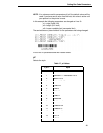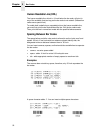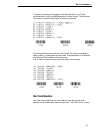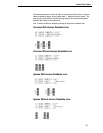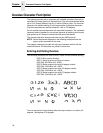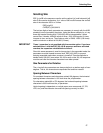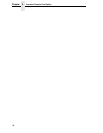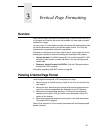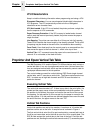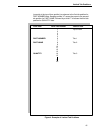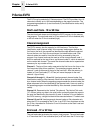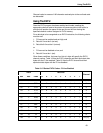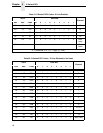
Selecting Size
57
Selecting Size
ESC [p1;p2 B is the sequence used to set the vertical (p1) and horizontal (p2)
size of the oversize characters. A p1 value of 300 would increase the vertical
size of the character 300% or 3 times.
ESC[p1;p2 B
CHR$(27);“[300;300 B;
The last two digits of each parameter are necessary to comply with the ANSI
standard, but are ignored by the printer. Using the above example for p1, any
three digit number starting with 3 (300-399) will be interpreted as 3 times
normal size. Likewise, 400-499 equals 4 times, 1200-1299 equals 12 times
increase in size, and so on. The maximum size is 15600; 15600 (156 times)
and the minimum or default is 200;200 (2 times).
IMPORTANT
Times 1 expansion is not permitted with the oversize option. If you have
selected times 1 with the ESC[100;100 B sequence and have activated
oversize, the expansion value defaults to times 2.
Since this same sequence is used to change size in the expanded mode, the
parameters must be cleared to normal size, ESC[100;100 B, to prevent
entering expanded mode when oversize is turned off. Oversize defaults to
double-sized, 200;200, (even when 100;100 is sent) so the 100;100 sequence
must be sent after the oversize characters have been printed.
Size Parameters for Rotation
The p1 and p2 size parameters are always relative to a rotation angle of zero
degrees. That is, the characters are expanded first and then rotated.
Spacing Between Characters
For unrotated characters and characters rotated 180 degrees, the horizontal
spacing between characters is 1/60 inch times the p2 parameter.
For characters rotated 90 or 270 degrees, the horizontal spacing between
characters is 3/60 inch times the p1 parameter.
Vertical spacing is dependent on vertical paper move commands (LF, CR,
VPR, etc.) and the character size and line spacing currently in effect.



